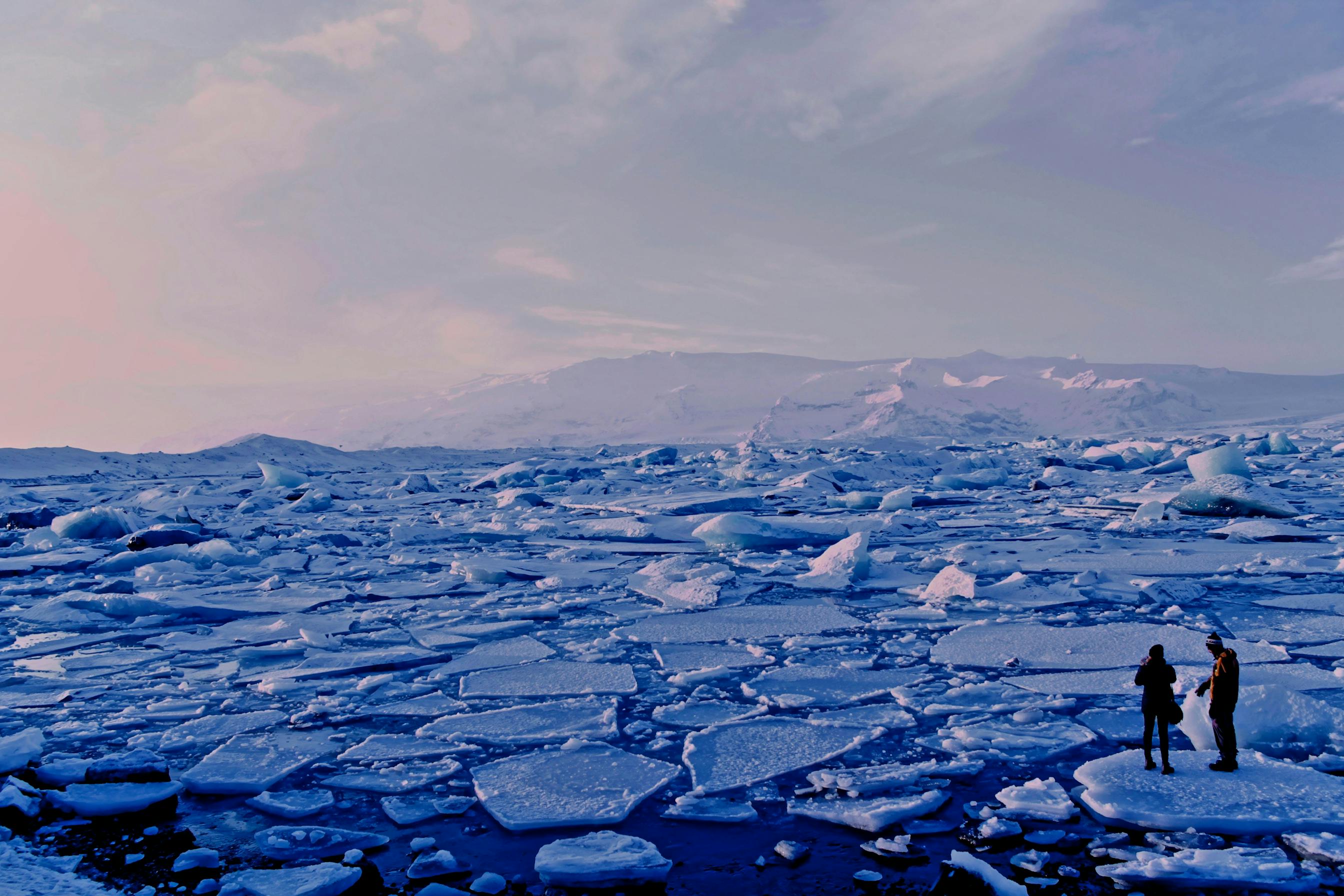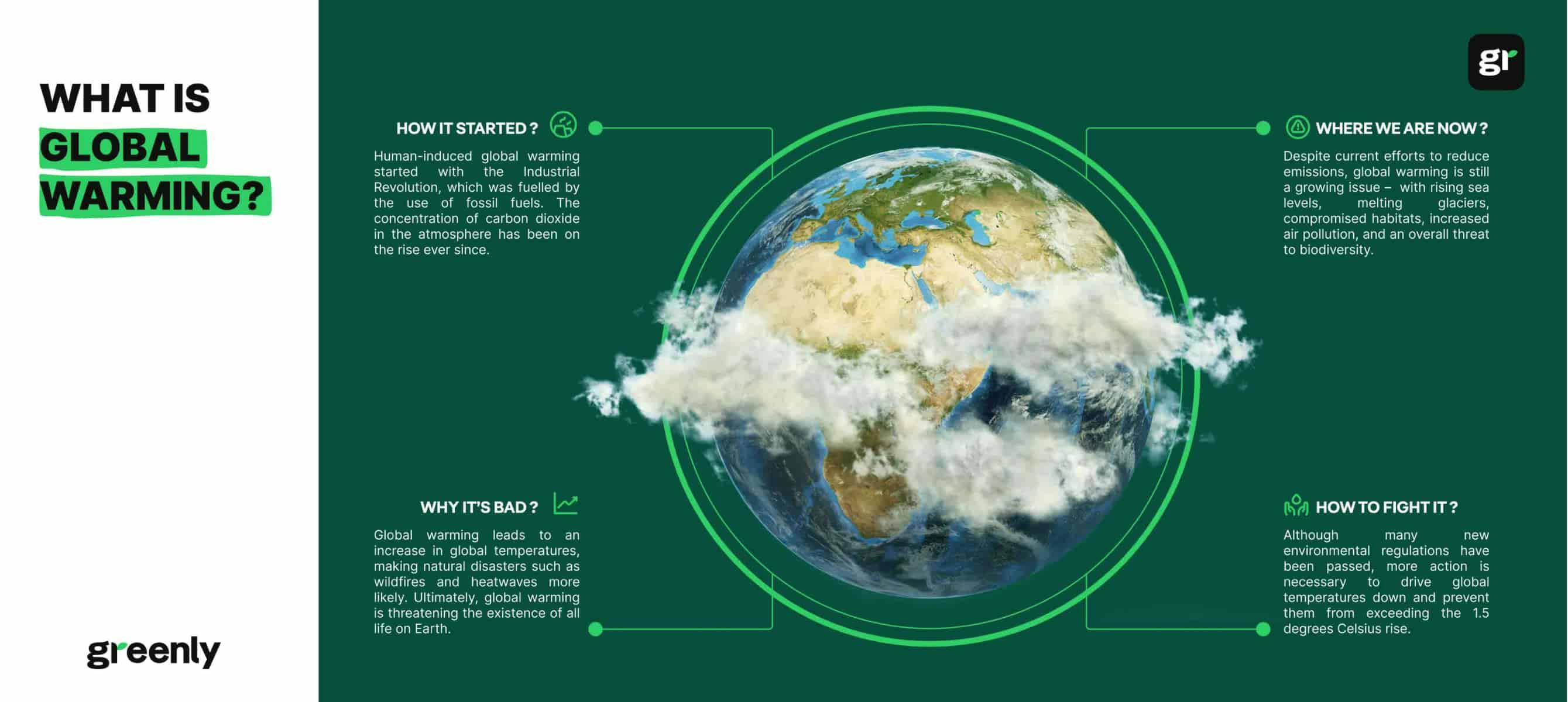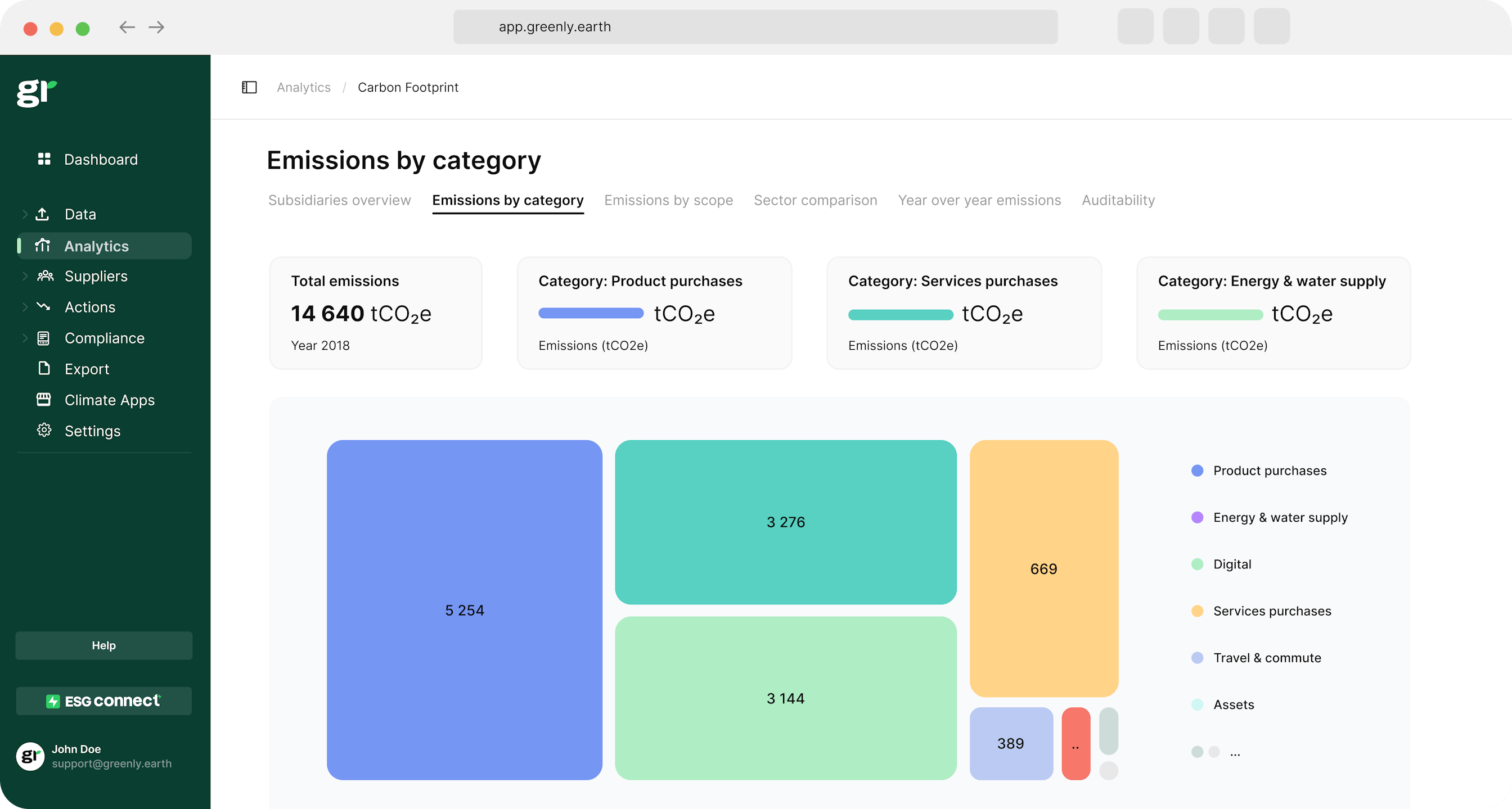ESG / CSR
Industries
How to Solve Global Warming: Challenges & Solutions



Global warming isn’t a distant concern - it’s already reshaping our world. Each year, we see new temperature records shattered, with 2024 officially the hottest year on record, surpassing 1.6°C above pre-industrial levels. Rising global temperatures are fueling extreme weather events, from devastating heatwaves to increasingly intense wildfires.
The recent wildfires in Los Angeles are just one example. Stretching across thousands of acres, they’ve destroyed homes, displaced communities, and left behind a staggering financial toll. Scientists warn that without urgent action, such disasters will only become more frequent and severe.
Yet, misconceptions about climate change persist. Some believe the solution is as simple as planting more trees, while others argue that reversing global warming will require far more systemic change. So, what can actually be done to curb rising temperatures and cut greenhouse gas emissions?
👉 In this article, we’ll break down what global warming is, the key factors driving it, and the most effective solutions to mitigate its impact.
What is global warming?
Global warming refers to the long-term increase in Earth’s average surface temperature due to human activities - primarily the burning of fossil fuels such as coal, oil, and gas. These activities release greenhouse gases into the atmosphere, trapping heat and disrupting the planet’s delicate climate balance.
Over the past century, human-driven emissions have accelerated at an unprecedented rate, pushing global temperatures 1.6°C above pre-industrial levels. Scientists warn that if warming continues, the Earth's climate will face irreversible damage - rising sea levels will swallow coastal cities, extreme weather will intensify, and ecosystems will struggle to survive.
This heating is not uniform across the planet. Some regions, particularly the Arctic, are warming at nearly four times the global average, leading to faster ice melt and disruption of ocean currents. Meanwhile, areas prone to droughts are experiencing more prolonged dry spells, while humid regions are seeing more intense storms and flooding.

Global warming vs. climate change
While the terms global warming and climate change are often used interchangeably, they refer to different phenomena:
- Global warming refers specifically to the increase in Earth’s surface temperature due to greenhouse gas emissions.
- Climate change encompasses the broader shifts in weather patterns caused by this warming, including stronger hurricanes, more frequent droughts, shifting ecosystems, and changing precipitation levels.
In short, global warming is driving global climate change. The continued rise in temperatures fuels disruptions across the world - from more extreme heatwaves and melting ice caps to changing rainfall patterns that impact agriculture and water supply.
The impacts of global warming
The effects of global warming are already visible across the world, disrupting ecosystems, economies, and human societies. Below is a breakdown of key impacts:
| Impact | Description | Examples |
|---|---|---|
| Rising Temperatures | Global temperatures have increased by 1.2°C since pre-industrial levels, leading to more frequent and intense heatwaves. | The 2024 heatwave in Southern Europe saw temperatures surpass 118°F, leading to hundreds of deaths. |
| Rising Sea Levels | Melting glaciers and ice sheets contribute to sea level rise, putting coastal cities at risk of flooding. | Jakarta is sinking so rapidly that Indonesia is relocating its capital to Borneo. |
| Melting Glaciers & Ice Sheets | The loss of ice in polar regions disrupts global ocean currents and threatens freshwater supplies. | The Greenland Ice Sheet is losing 280 billion tons of ice per year. |
| More Extreme Weather | Higher temperatures intensify hurricanes, wildfires, floods, and droughts. | The 2024 Los Angeles wildfires burned over 23,000 acres, forcing thousands to evacuate. |
| Biodiversity Loss | Many species are struggling to adapt to shifting climates, leading to extinctions. | Coral reefs are dying due to rising sea temperatures, affecting marine ecosystems and fisheries. |
| Ocean Acidification | Excess CO₂ dissolves into oceans, altering pH levels and harming marine life. | The Great Barrier Reef has lost 50% of its coral cover due to warming and acidification. |
| Food & Water Scarcity | Droughts and erratic weather reduce crop yields, threatening food security. | In 2023, East Africa faced its worst drought in 40 years, leaving millions in hunger. |
| Health Crises | Air pollution and extreme heat contribute to respiratory diseases and heatstroke. | Wildfire smoke in North America led to a surge in hospital admissions for respiratory issues. |
👉 Global warming is not a distant problem - it’s happening now. Without urgent action to reduce emissions, these impacts will become even more severe and widespread.

What causes global warming?
At its core, global warming is driven by the greenhouse effect, a natural process that helps regulate Earth’s temperature. Certain gases in the atmosphere - known as greenhouse gases (GHGs) - trap some of the sun’s heat, preventing it from escaping back into space. This creates a stable climate that has allowed life to thrive for millions of years.
However, since the Industrial Revolution, human activity has drastically intensified this effect by releasing excessive amounts of greenhouse gases into the atmosphere. The result? More heat is trapped, causing Earth's average temperature to rise at an accelerated and unprecedented rate.
How does the greenhouse effect work?
- Solar radiation reaches Earth. About 30% of the sun’s energy is reflected back into space by clouds, ice, and other reflective surfaces.
- The rest is absorbed. Roughly 70% of solar energy is absorbed by the land, oceans, and atmosphere, warming the planet.
- Heat is radiated back toward space. The Earth naturally emits infrared radiation (heat) as it cools.
- Greenhouse gases trap some of this heat. Instead of escaping into space, a portion of this infrared radiation is absorbed by greenhouse gases in the atmosphere and re-emitted in all directions - including back toward Earth’s surface.
This process is essential for maintaining a habitable climate. Without it, Earth’s average surface temperature would be around -18°C (0°F), making it inhospitable for most life. However, human activities have disrupted this delicate balance, increasing the concentration of greenhouse gases and trapping more heat than ever before.
The key greenhouse Gases driving global warming
Each greenhouse gas has different sources, lifespans, and warming potentials. Below are the most significant contributors:
| Greenhouse Gas | Source | Impact on Global Warming |
|---|---|---|
| Carbon dioxide (CO₂) | Burning coal, oil, and gas for electricity, industry, and transportation. Also released through deforestation and cement production. | Largest contributor (responsible for ~76% of human-caused emissions). Stays in the atmosphere for 300-1,000 years, making it the most persistent driver of warming. |
| Methane (CH₄) | Emitted by livestock (cow burps), rice paddies, landfills, and fossil fuel extraction (natural gas leaks). | 84 times more potent than CO₂ over 20 years, though it breaks down within 12 years. |
| Nitrous oxide (N₂O) | Released from synthetic fertilizers, livestock manure, and industrial processes. | 265 times more powerful than CO₂ over 100 years. Remains in the atmosphere for over a century. |
| Fluorinated gases (HFCs, PFCs, SF₆, NF₃) | Used in refrigeration, air conditioning, and electronics manufacturing. | The most potent warming gases, with some being thousands of times stronger than CO₂. Can last for centuries in the atmosphere. |
The role of human activity
Since the Industrial Revolution, human activities have caused a 40% increase in atmospheric carbon dioxide levels, from 280 parts per million (ppm) in the 1800s to over 420 ppm today - the highest in at least 800,000 years.
- Fossil fuel combustion remains the largest source of CO₂ emissions, primarily from coal-fired power plants, transportation, and heavy industry.
- Deforestation reduces the planet’s ability to absorb CO₂, further exacerbating global warming.
- Agricultural expansion and livestock farming have doubled methane levels since pre-industrial times.
- Industrial processes continue to release long-lived fluorinated gases, which have an outsized impact on warming despite being emitted in smaller quantities.
The consequence of these rising greenhouse gas concentrations? More heat is trapped, increasing global temperatures and intensifying climate-related disruptions worldwide.
Below are the key industries and activities fueling global warming:
| Sector | How It Contributes to Global Warming | Key Facts & Impact |
|---|---|---|
| Energy Production | Burning coal, oil, and natural gas for electricity and heat releases massive amounts of CO₂ into the atmosphere. | Fossil fuel-based energy accounts for about 73% of global emissions. The world's largest coal-fired power plants each emit more than 200 million tons of CO₂ annually. |
| Transportation | Cars, trucks, airplanes, and ships burn gasoline and diesel, releasing CO₂ and other pollutants. | The transportation sector is responsible for about 25% of global emissions, with road transport alone contributing 75% of that total. Electric vehicles (EVs) offer a lower-emission alternative. |
| Industrial Manufacturing | Factories producing steel, cement, chemicals, and electronics consume vast amounts of energy and emit CO₂ during production. | Cement production alone contributes 8% of global CO₂ emissions—more than the aviation industry. |
| Deforestation & Land Use Changes | Forests naturally absorb CO₂, but large-scale deforestation releases that stored carbon back into the atmosphere. | The Amazon rainforest has lost over 17% of its forest cover in the last 50 years, reducing its ability to store carbon. |
| Agriculture & Livestock | Farming produces methane (CH₄) from livestock digestion and nitrous oxide (N₂O) from fertilizers—both far more potent than CO₂. | The livestock industry alone accounts for 14.5% of global greenhouse gas emissions, with beef and dairy production being the biggest contributors. |
| Plastic Production & Waste | Plastic is made from fossil fuels, and its manufacturing process emits greenhouse gases. When plastic degrades, it can release methane, and incineration produces CO₂. | 99% of plastics are derived from fossil fuels, and plastic waste is a growing environmental and climate issue. |
| Heating & Air Conditioning | Many heating and cooling systems rely on electricity from fossil fuels, and air conditioners use fluorinated gases, which have an extremely high warming potential. | Some refrigerants are thousands of times more potent than CO₂, making them a significant contributor to global warming. |
Why this matters
The scientific evidence is clear: global warming is caused by human activities - not natural cycles or external factors. The sharp rise in greenhouse gas emissions over the past 150 years directly correlates with rising global temperatures, disrupted weather patterns, and intensifying climate disasters.
If emissions continue at their current rate, we are on track to push the planet toward irreversible climate tipping points.
👉 Understanding the role of human-driven GHG is essential for identifying solutions that can slow, and ultimately reverse, the trend of global warming.


The challenges of solving global warming
Addressing global warming is not just a technological challenge - it’s a systemic, economic, and societal one. While wealthier nations like the United States and China - the world’s largest emitters - have the resources to implement large-scale emissions reduction strategies, the reality is that transitioning away from fossil fuels is a complex, global effort that faces multiple obstacles.
Here are some of the biggest challenges to solving global warming and preventing further climate breakdown:
Consumerism & overconsumption
In developed nations, modern lifestyles are built around constant consumption - from fast fashion and next-day delivery to energy-intensive conveniences like air conditioning, streaming services, and smart devices. The demand for endless goods and services drives carbon emissions across supply chains, making it difficult to scale back without major shifts in both consumer behavior and corporate responsibility.
Why it’s a challenge:
- Overconsumption leads to higher industrial emissions, deforestation, and waste production.
- Many economies depend on consumer spending, making it politically difficult to push for systemic changes.
- Public appetite for sustainable alternatives exists, but companies often prioritize profitability over sustainability.
Decarbonizing global travel & transportation
A century ago, crossing continents took weeks - today, a flight from Europe to Asia takes less than a day. While this connectivity has transformed global trade, tourism, and business, aviation remains one of the hardest industries to decarbonize due to the lack of viable low-emission alternatives.
Why it’s a challenge:
- Aviation accounts for 2.5% of global carbon dioxide emissions, and demand for flights is expected to keep rising.
- Sustainable aviation fuels (SAFs) aren’t yet scalable or widely available.
- Electric or hydrogen-powered planes are still in early development, and won’t be commercially viable for at least another decade.
The globalised economy
The modern economy is deeply interconnected - countries rely on imports and exports for food, technology, raw materials, and manufactured goods. This means huge volumes of goods are transported across the world daily, relying heavily on fossil fuels. While localizing production could help reduce emissions, global supply chains are complex and deeply embedded in international trade agreements and economic structures.
Why it’s a challenge:
- Freight transport (shipping and trucking) accounts for 7% of global emissions.
- Many industries depend on cheap overseas manufacturing, making localization expensive.
- Countries resist trade restrictions, even when emissions reductions are at stake.
The energy demands of modern technology
Technology has revolutionized daily life - but it comes with a hidden environmental cost. From cloud computing and artificial intelligence to social media and video streaming, our reliance on digital infrastructure demands vast amounts of energy.
Why it’s a challenge:
- The data storage industry already consumes over 2% of global electricity and is projected to grow.
- Cryptocurrencies like Bitcoin rely on high-energy "mining" operations, adding to emissions.
- While the internet feels virtual, data centers require huge physical cooling systems that generate significant carbon footprints.
Burning fossil fuels
The world still relies on fossil fuels for more than 80% of its energy needs. The slow shift toward renewables isn’t just about technological capability - it’s also about political will, economic interests, and infrastructure transformation.
- Governments often subsidize fossil fuel industries, making it harder for renewables to compete.
- Energy transitions require massive infrastructure investment - a challenge for developing countries.
- The fossil fuel industry exerts major political influence, slowing legislative action on climate policies.
Can we stop global warming?
The challenges are real, but not insurmountable. Decarbonization is already happening - solar and wind energy are now the cheapest energy sources, and international cooperation is pushing for more ambitious climate policies.
The biggest hurdle? Time. Every delay in reducing emissions increases the risk of climate tipping points that could make future solutions far more costly and difficult.
👉 While global warming presents unprecedented challenges, technological innovation, systemic change, and collective action will determine how successfully we can mitigate its impact.
Global warming solutions
While global warming presents serious challenges, we already have the tools and knowledge to significantly reduce emissions and slow climate change. The key is rapid implementation - both at the individual and systemic level.
Here are 10 impactful solutions to climate change:
1. Transition to renewable energy
Shifting from fossil fuels to renewable energy sources like solar, wind, hydro, and geothermal power is one of the most effective ways to reduce greenhouse gas emissions.
Why it matters:
- Fossil fuel-based energy accounts for 91% of global emissions.
- Renewables are now cheaper than coal and gas in many regions.
- Investing in solar panels and wind farms creates long-term economic savings.
2. Expand carbon capture & storage (CCS)
Carbon capture and storage (CCS) technology allows carbon dioxide emissions to be captured at the source, preventing them from entering the atmosphere. While not a substitute for reducing emissions, it can help neutralize industries that are harder to decarbonize, such as steel and cement production.
Why it matters:
- CCS could reduce industrial emissions by up to 14% by 2050.
- It provides a bridge while renewable energy infrastructure scales up.
3. Shift toward more sustainable diets
The food system contributes around 30% of global emissions, largely due to meat and dairy production. Transitioning to a more plant-based diet, reducing food waste, and supporting regenerative agriculture can significantly lower emissions.
Why it matters:
- Beef production emits 20 times more carbon dioxide per gram of protein than plant-based alternatives.
- Reducing meat consumption lowers deforestation rates, as forests are cleared for cattle grazing.
- Sustainable farming practices help improve soil health and carbon sequestration.
4. Improve public transportation & urban planning
The transportation sector is responsible for around 25% of global emissions. Expanding public transport networks, walkable cities, and cycling infrastructure can help reduce car dependency.
Why it matters:
- Cities with efficient metro and bus systems (e.g., Tokyo, Copenhagen, Amsterdam) have lower per-capita emissions.
- Electrifying buses and trains further reduces urban pollution.
- Investing in high-speed rail decreases domestic air travel emissions.
5. Scale up sustainable aviation fuels (SAFs) & green hydrogen
Air travel remains one of the hardest industries to decarbonize, with emissions expected to rise as demand for flights grows. Developing biofuels, green hydrogen, and electric aircraft could help reduce aviation's impact.
Why it matters:
- Sustainable aviation fuels (SAFs) can cut aviation emissions by up to 80%.
- The EU is requiring airlines to blend SAFs into fuel supplies by 2030.
- Electric planes for short-haul flights are in early development.
6. Enforce energy efficiency in homes & buildings
Buildings account for about 37% of energy consumption worldwide. Insulating homes, using smart thermostats, and upgrading to energy-efficient appliances can drastically cut emissions.
Why it matters:
- Proper insulation can reduce heating costs by up to 50%.
- LED lighting, heat pumps, and smart appliances reduce household energy demand.
7. Increase recycling & composting infrastructure
Landfills and incinerators release large amounts of methane and carbon emissions, making waste management an overlooked cause of climate change. Expanding recycling, composting, and circular economy systems can significantly lower emissions.
Why it matters:
- 91% of plastics are not recycled, increasing the carbon footprint of new plastic production.
- Composting reduces landfill methane emissions while enriching soil.
8. Cut food waste & improve supply chains
Globally, about 30% of food produced is wasted - accounting for 8-10% of global greenhouse gas emissions. Reducing food waste at the consumer, business, and supply chain level is a major climate change solution.
Why it matters:
- Smarter logistics can reduce food spoilage during transport.
- Apps like Too Good To Go help consumers buy surplus food at lower prices, reducing waste.
9. Reduce unnecessary air travel & car usage
While travel is essential, many flights and car trips are unnecessary. Businesses and individuals can rethink their transportation choices, opting for virtual meetings, train travel, or car-sharing where possible.
Why it matters:
- Business travel alone accounts for 15-20% of airline emissions.
- Trains emit 86% less CO₂ per passenger than flights on short-haul routes.
- Car-sharing and public transport reduce urban congestion and emissions.
10. Reduce household energy consumption
From smart thermostats to unplugging electronics, small changes at home collectively make a big impact when it comes to energy efficiency. Reducing demand for electricity means less reliance on fossil fuel-based power grids.
Why it matters:
- Heating and cooling account for half of household energy use.
- Simply lowering heating by 1°C can reduce carbon emissions by 7%.
- Smart home tech, like motion-sensor lighting and programmable thermostats, optimizes energy use.
💡 Many countries offer incentives for energy-efficient home upgrades, such as heat pumps and solar panels.
The path forward
The solutions to tackle climate change exist - but scaling them up requires global cooperation. Governments, businesses, and individuals must work together to transition toward a low-carbon future.
👉 Reducing global warming and addressing the global climate crisis isn't just about one solution - it’s about implementing many solutions at scale, as quickly as possible.
How Greenly can help your company
Navigating the challenges of climate change and reducing your company’s carbon emissions requires expertise, data-driven insights, and actionable strategies. At Greenly, we provide carbon management solutions that help businesses measure, analyze, and minimize their environmental impact- enabling them to take meaningful climate action and fight climate change.
Measure and track your emissions
Greenly’s platform enables you to monitor your Scope 1, 2, and 3 emissions in real-time. By identifying where your emissions are highest, we provide a clear understanding of your company’s carbon footprint and where action is needed to fight global warming.
Identify opportunities for reduction
Our software pinpoints key areas where emissions can be reduced, helping you prioritize high-impact changes across your operations and supply chain.
Tailored action plans
We help you develop customized decarbonization strategies that align with your industry and sustainability goals. Whether it’s optimizing energy use, improving supply chain practices, or transitioning to renewable energy, we provide the tools and guidance needed to drive meaningful climate action.
Build a more sustainable supply chain
We assist in identifying sustainable suppliers and reducing Scope 3 emissions, ensuring your supply chain aligns with your company’s climate commitments.
Greenly’s carbon management solutions are designed to help you fight climate change, reduce your environmental impact, lower operational costs, and enhance your brand’s reputation. By turning sustainability into an actionable strategy, we empower your company to lead in the transition toward a low-carbon future and fight global warming with measurable, impactful climate action.
Get in touch with us today to start your decarbonization journey.






